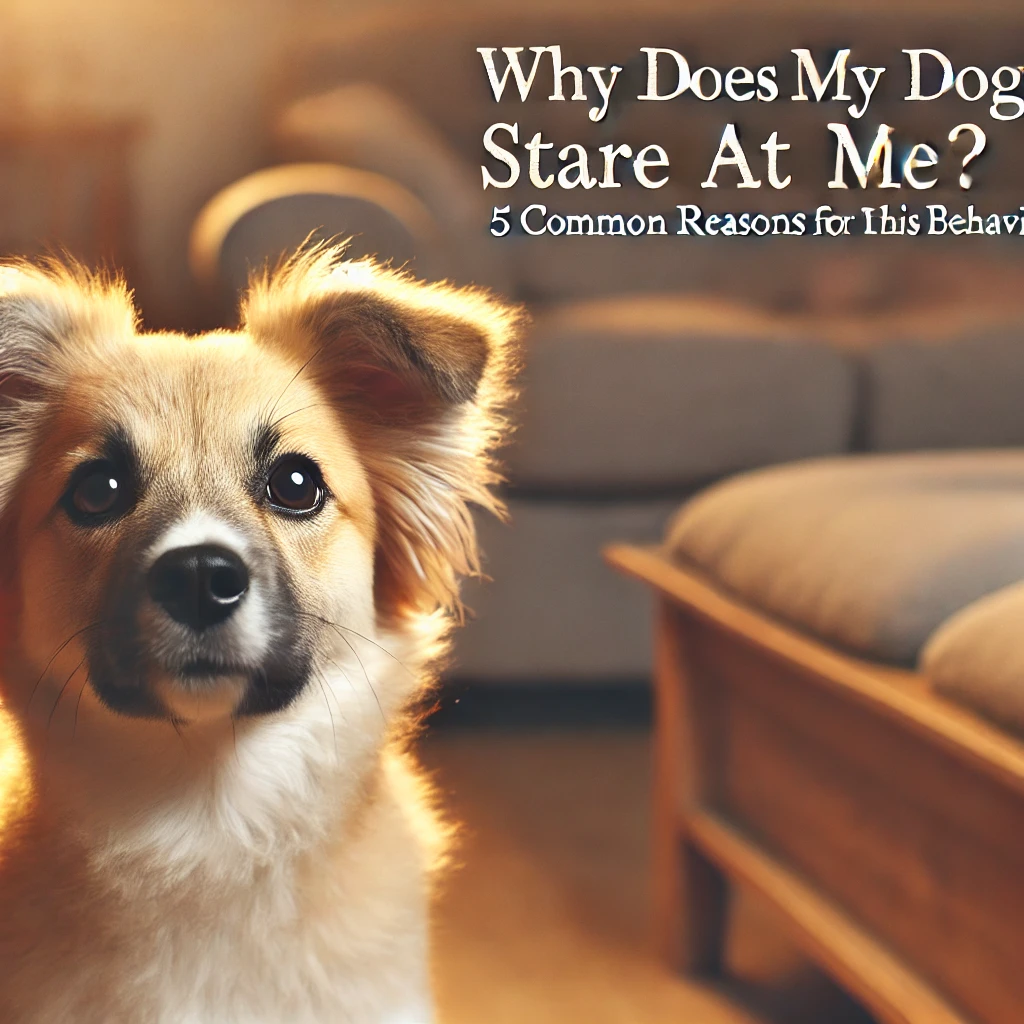
Have you ever caught your dog staring at you and wondered what’s going on in their mind?
Whether you’re eating, working, or simply relaxing, your dog’s gaze can sometimes feel intense, almost like they’re trying to communicate something important.
If you’re asking yourself, “Why does my dog stare at me?”, you’re not alone—this is one of the most common questions dog owners ask.
There are actually several reasons for this behavior, and in this post, we’ll break down five of the most common ones.
By the end, you’ll understand your pup a little better and know how to respond when those curious eyes are locked on you.
1. Your Dog Wants Something
One of the simplest reasons your dog may stare at you is because they want something—whether it’s food, water, or just a belly rub.
Dogs use eye contact as part of their communication toolkit.
When your pup wants attention or a treat, they know that staring at you will likely get a response.
You might notice your dog staring while you’re eating, particularly if they’ve learned that you sometimes sneak them a bite.
They might also stare when they’re thirsty or waiting for their daily walk.
Tip: If your dog often stares at you during meal times, consider setting clear boundaries and sticking to a regular feeding schedule.
Using interactive feeding toys or puzzle bowls can also help distract them from begging behavior and keep their mind engaged.
2. Your Dog Is Showing Affection
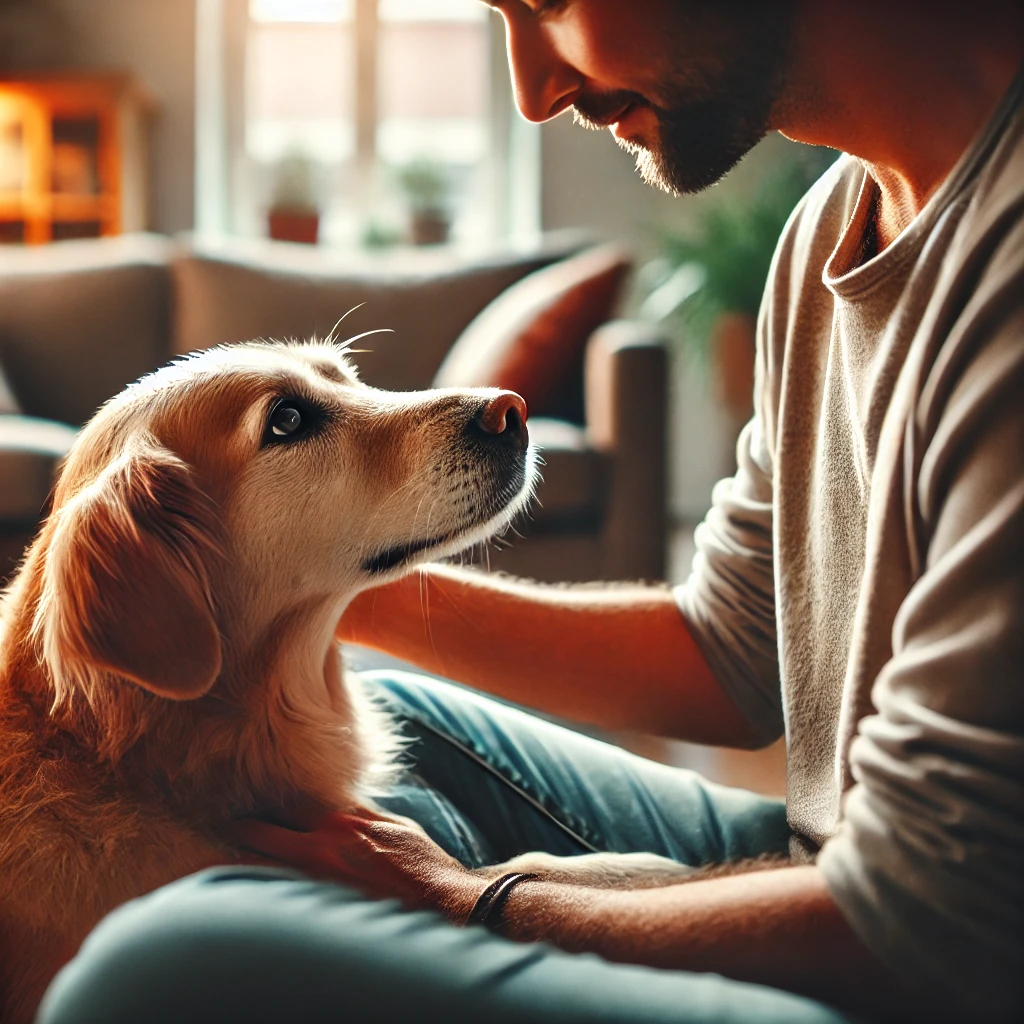
Another reason your dog might be staring at you is affection.
Dogs are highly social animals, and eye contact can be a sign of love and bonding.
In fact, studies show that when a dog and their owner look into each other’s eyes, both release oxytocin, often called the “love hormone.”
This is the same hormone that strengthens the bond between parents and children, so it’s no wonder your dog stares at you when they feel close.
Tip: If your dog stares at you in a calm, relaxed manner, they may just be expressing their love.
Responding with gentle petting or calm words can reinforce this connection.
However, avoid prolonged eye contact if your dog seems anxious, as this can make them uncomfortable.
3. Your Dog Is Waiting for a Cue
Dogs are excellent at picking up on human signals.
They often look to their owners for cues about what’s coming next, especially if they’re trained to follow commands.
If you notice your dog staring at you while standing still, they might be waiting for instructions—like whether it’s time for a walk, playtime, or to go outside.
This behavior is particularly common in well-trained dogs or those that are used to structured routines.
They’ve learned that by watching you, they’ll know what to do next.
Tip: Consistent training can strengthen your dog’s ability to read your cues.
Use a clicker or reward-based system to reinforce the behaviors you want, and your dog will continue looking to you for guidance.
4. Your Dog Is Anxious or Uncomfortable
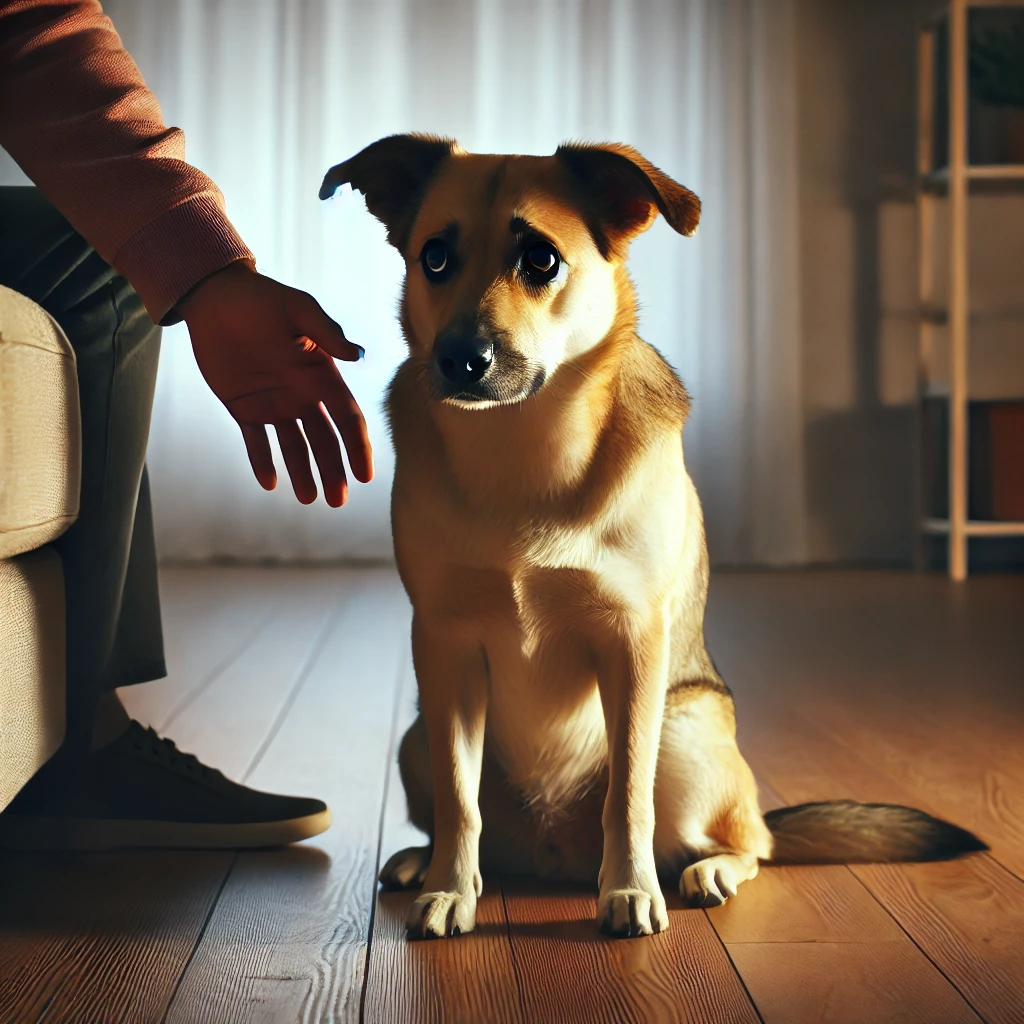
Sometimes, a stare isn’t just about love or curiosity—it can be a sign of anxiety.
If your dog feels uneasy or is in an unfamiliar situation, they might stare at you for reassurance.
Dogs see their owners as their leaders, so when they’re stressed, they may look to you to feel safe.
You might see this kind of stare during thunderstorms, when guests visit, or when your dog encounters new environments.
Other signs of anxiety could include pacing, whining, or panting.
Tip: If your dog often stares at you during stressful situations, consider ways to reduce their anxiety.
A calming dog bed or an anxiety wrap can provide comfort.
You can also offer a soothing chew or distraction toy to help ease their stress.
5. Your Dog Is Just Curious
Dogs are naturally inquisitive, and sometimes, staring is just a sign of their curiosity.
Whether you’re cooking, working on a new project, or watching something on TV, your dog might be staring simply because they’re interested in what you’re doing.
Their minds are constantly processing the world around them, and staring is one way they take in new information.
For instance, if you’re doing something your dog hasn’t seen before, like unpacking a box or working on a home improvement project, they might fixate on you to figure out what’s going on.
Tip: Engage your dog’s curiosity by involving them in fun activities.
Try interactive play or a puzzle toy to stimulate their mind and satisfy their natural curiosity.
Encouraging exploration and play is a great way to build your dog’s confidence.
Is It Something More Serious?
While staring is usually harmless, in some cases, it could be a sign of a more serious issue.
If your dog’s staring is accompanied by unusual behavior—like excessive blinking, confusion, or signs of pain—it might be worth consulting your vet.
Staring could be linked to cognitive issues, vision problems, or discomfort, especially in older dogs.
Understanding Eye Contact in Dog Communication
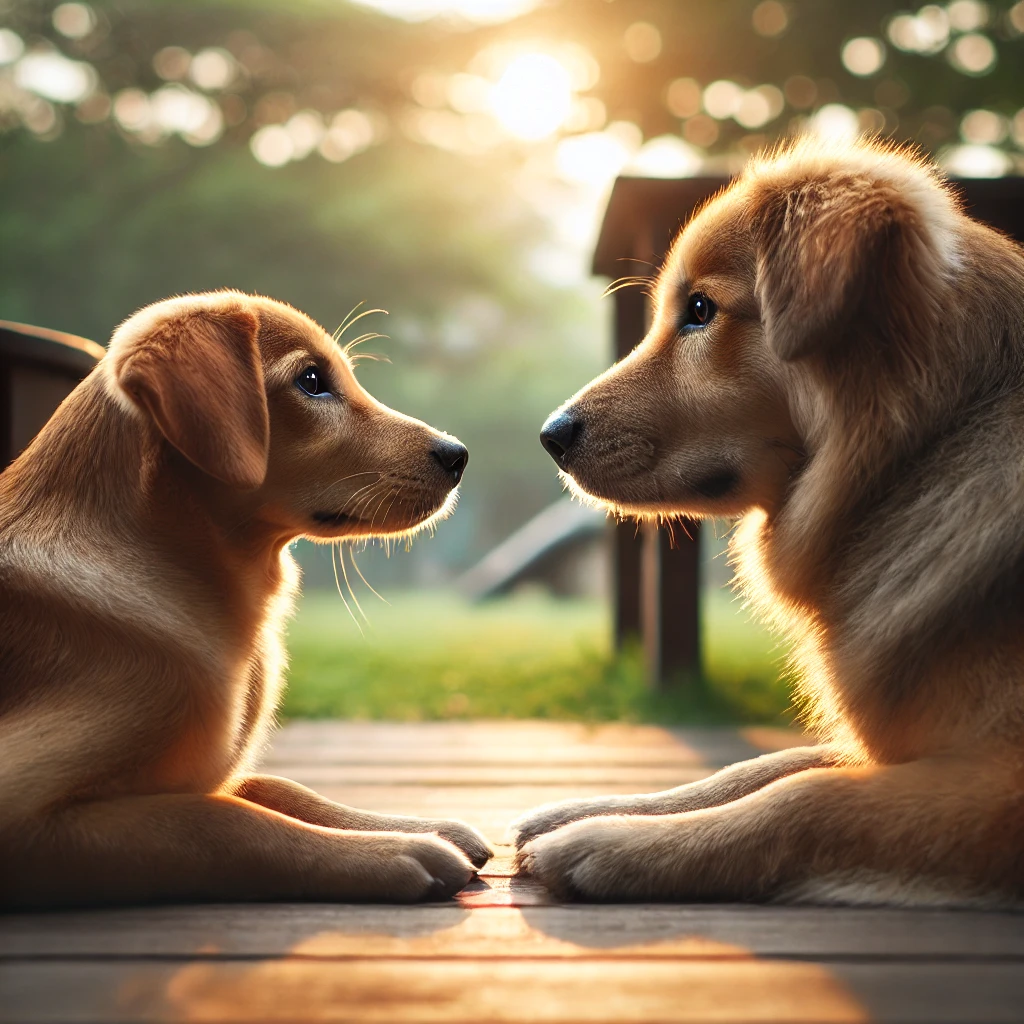
Dogs use eye contact not only with humans but also with other dogs. In the wild, eye contact often conveys dominance or submission.
However, domesticated dogs have adapted to use their gaze in more nuanced ways with humans, typically as a form of communication rather than aggression.
This section can explain the different ways eye contact functions in both dog-to-dog and dog-to-human interactions.
Tip: While some dogs use eye contact as a form of communication, direct staring from a dog that’s unfamiliar to you could be a sign of discomfort or aggression.
It’s important to assess body language along with the stare.
Training Your Dog to Break the Stare
If your dog stares excessively or in situations where it’s inappropriate, you may want to teach them to break their focus when needed.
This section can provide actionable tips on how to gently redirect your dog’s attention using positive reinforcement.
Training Tip: Use distraction techniques, like calling their name or offering a favorite toy, to break a stare.
Once they respond, reward them with a treat or praise to reinforce the behavior.
Using Staring as a Training Tool
Since dogs naturally look to their owners for guidance, you can actually use their staring habit to your advantage in training.
This section can explain how to incorporate their focus into training routines, especially when teaching new commands.
Training Tip: Use your dog’s gaze to reinforce training commands like “sit” or “stay.”
Wait for eye contact before giving the next instruction—this helps your dog understand they’re waiting for your next cue.
Common Misconceptions About Dog Staring
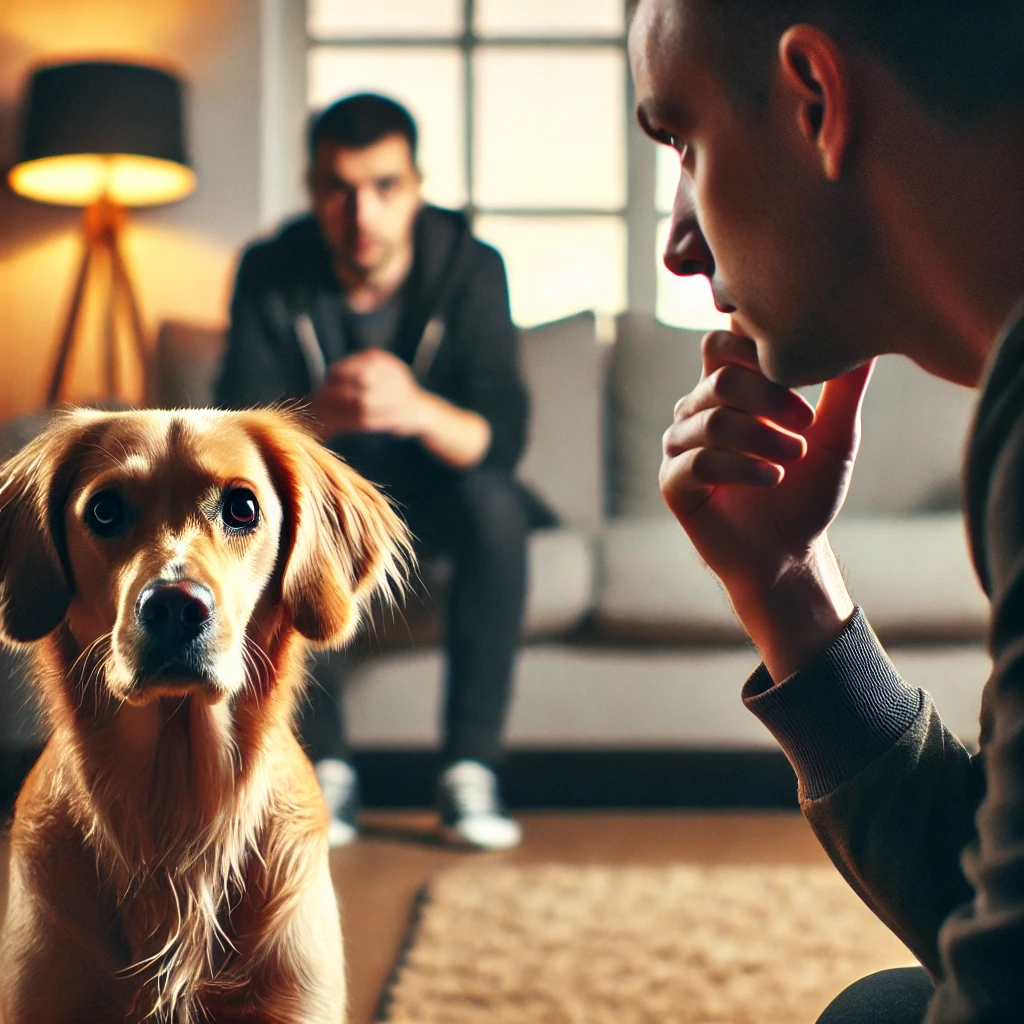
Some dog owners misinterpret staring behavior as aggression or disobedience, especially if they aren’t familiar with canine body language.
This section can dispel common myths about dog staring and reassure readers that it’s usually harmless or affectionate.
Myth Busting: Not all staring is aggressive.
In fact, most of the time, dogs are just trying to communicate with you, whether it’s out of curiosity, affection, or the desire to understand what’s next.
What Not to Do When Your Dog Stares at You
While understanding your dog’s staring behavior is important, it’s equally crucial to know what not to do in response.
Here are some key things to avoid when your dog locks eyes with you:
1. Don’t Reward Unwanted Behavior
If your dog stares at you because they’re begging for food or attention, rewarding that behavior can reinforce it. F
or example, if you give them treats every time they stare at you during meal times, they’ll learn that staring leads to rewards, making the behavior more frequent.
What to Do Instead: Set boundaries and encourage your dog to engage in positive behaviors like sitting calmly or playing with a toy during your meal.
Only reward behaviors you want to reinforce.
2. Don’t Stare Back Aggressively
While it’s natural to want to return eye contact, staring directly into your dog’s eyes for long periods, especially in a stiff or aggressive manner, can be perceived as a challenge or threat in the animal world.
This could make some dogs feel anxious or even trigger defensive behaviors.
What to Do Instead: If your dog seems nervous or uncomfortable with direct eye contact, soften your gaze or blink to signal that you’re not being confrontational.
You can also use calm, soothing words to ease their anxiety.
3. Don’t Ignore Signs of Distress

If your dog’s staring is accompanied by other signs of stress, such as whining, pacing, or panting, ignoring them could make their anxiety worse.
Staring in this context is often a cry for help, and your dog may be looking to you for comfort or guidance.
What to Do Instead: Acknowledge your dog’s distress and take steps to alleviate their anxiety.
This could mean providing a safe space, offering a calming toy, or, in extreme cases, seeking advice from a vet or dog behaviorist.
4. Don’t Punish Your Dog for Staring
Punishing your dog for staring can create confusion, especially if they’re simply trying to communicate with you.
Dogs don’t understand punishment in the same way humans do, and negative reactions like yelling can damage the trust between you and your pet.
What to Do Instead: Use positive reinforcement to guide your dog’s behavior.
If you want to stop unwanted staring, redirect their attention to an appropriate activity, like fetching a toy, and reward them for complying.
5. Don’t Misinterpret Every Stare
Not every stare requires a reaction.
Sometimes, your dog is simply observing their surroundings or being curious about what you’re doing.
Over-analyzing every moment of eye contact could lead to unnecessary concern or overcompensation in your responses.
What to Do Instead: Learn to recognize when your dog’s stare is simply harmless observation versus when they’re trying to communicate something specific, like needing to go outside or asking for attention.
6. Don’t Encourage Staring as a Solution for Everything
While staring can be a helpful way for dogs to communicate, encouraging them to stare for every need can limit other forms of communication.
If your dog relies too heavily on staring, they might not develop other behaviors, such as barking to go outside or using body language to indicate discomfort.
What to Do Instead: Teach your dog a variety of communication methods, such as ringing a bell to go outside or sitting calmly to request a treat.
This helps prevent over-reliance on staring and encourages more balanced behavior.
By knowing what not to do when your dog stares at you, you can ensure that your responses are constructive, nurturing, and promote healthy communication.
These tips will help you build a stronger bond with your dog while avoiding common pitfalls.
Conclusion

Whether your dog is looking for attention, showing affection, or simply curious about what you’re doing, their gaze is one of the main ways they communicate with you.
By understanding the reasons behind their staring, you can respond more effectively and strengthen your bond with your furry friend.
Next time you catch your dog staring, take a moment to think about what they might be trying to say.
And if you’re ever concerned about the frequency or intensity of your dog’s staring, don’t hesitate to seek professional advice from your veterinarian.
Bonus Tip: If you’d like to foster more positive interactions with your dog, consider introducing new toys or treats to keep them mentally and physically engaged.
Engaging their mind can reduce boredom and the need for constant attention-seeking behavior.
By recognizing the reasons for your dog’s stare, you’re one step closer to decoding their unique form of communication and enhancing your connection.
Happy bonding!
FAQ: Why Does My Dog Stare at Me?
1. Is it normal for dogs to stare at their owners?
Yes, it’s completely normal for dogs to stare at their owners.
Dogs use staring as a form of communication to express various needs, desires, or emotions.
This behavior can indicate anything from wanting food to showing affection or waiting for a command.
Understanding the context of the stare can help you better interpret your dog’s intentions.
2. What should I do if my dog stares at me while I’m eating?
If your dog stares at you while you’re eating, it’s likely they’re hoping for a bite!
To discourage this behavior, avoid giving them food from the table.
Instead, you can provide them with a puzzle feeder or chew toy to keep them occupied while you eat.
Consistency is key—don’t reward their begging behavior with treats, as this will reinforce the habit.
3. Why does my dog stare at me when I sleep?
Your dog might stare at you while you’re sleeping for a few reasons.
They could be guarding you, waiting for you to wake up, or just watching over you because they feel safe and connected to you.
If this behavior bothers you, try creating a designated sleeping area for your dog to encourage more independent rest.
4. Can staring be a sign of aggression in dogs?
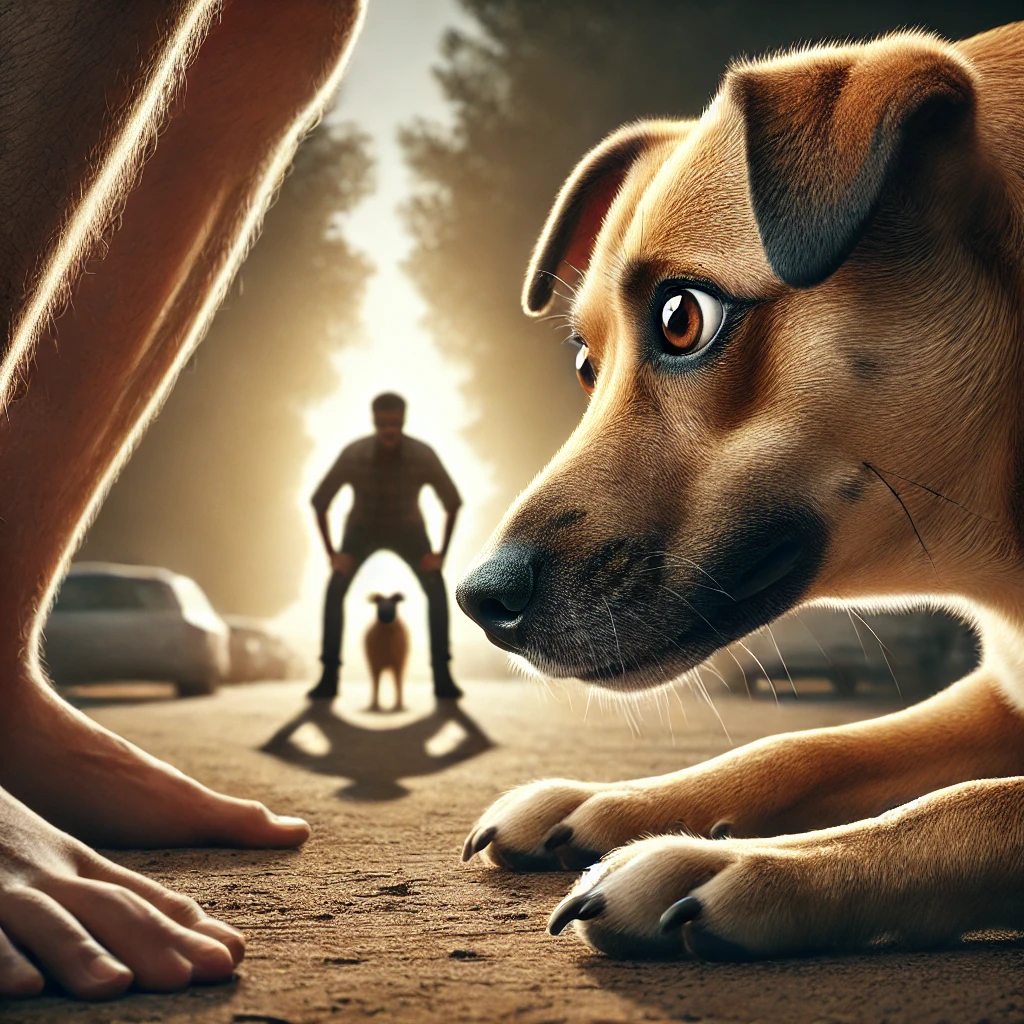
In some cases, especially with unfamiliar dogs, prolonged direct eye contact can be a sign of aggression or dominance.
However, with well-socialized pets, staring is typically harmless and often a form of communication or connection.
Always consider the context and your dog’s overall body language to assess the situation.
If a dog’s stare is accompanied by growling, stiff posture, or raised fur, it could indicate discomfort or aggression.
5. Does my dog stare at me because they’re bored?
Yes, dogs may stare at their owners out of boredom, especially if they’re seeking engagement or stimulation.
If your dog stares at you with an expectant look and seems restless, it might be time for playtime, a walk, or some mental stimulation through toys and games.
6. Why does my dog stare at me when I pet them?
When your dog stares at you while you pet them, it’s usually a sign of affection and trust.
They might be enjoying the attention and reinforcing their bond with you.
This eye contact often increases the production of oxytocin, strengthening the bond between you and your dog.
7. Is it bad if my dog stares at me too much?
In most cases, staring is completely normal and not harmful.
However, if your dog is staring excessively and it seems out of character, it could be a sign of a health issue, such as cognitive dysfunction or vision problems.
If you notice other concerning behaviors along with excessive staring, consult your vet for advice.
8. How can I stop my dog from staring at me?
If your dog’s staring becomes bothersome, you can redirect their attention with positive reinforcement techniques.
For instance, you can provide a toy, puzzle feeder, or treat to keep them engaged.
Training them to respond to commands like “go to your bed” or “sit” can also help reduce unwanted staring.
It’s important to ensure that you’re not reinforcing the behavior by unintentionally rewarding them when they stare.
9. Does my dog stare at me because they’re hungry?
Yes, hunger is one of the most common reasons dogs stare at their owners.
Dogs quickly learn that staring at you might result in being fed.
If your dog frequently stares at you around meal times or while you’re eating, it’s likely they’re trying to communicate their hunger.
Sticking to a regular feeding schedule and using feeding toys can help mitigate this behavior.
10. Why does my dog stare at me when I’m doing something new?
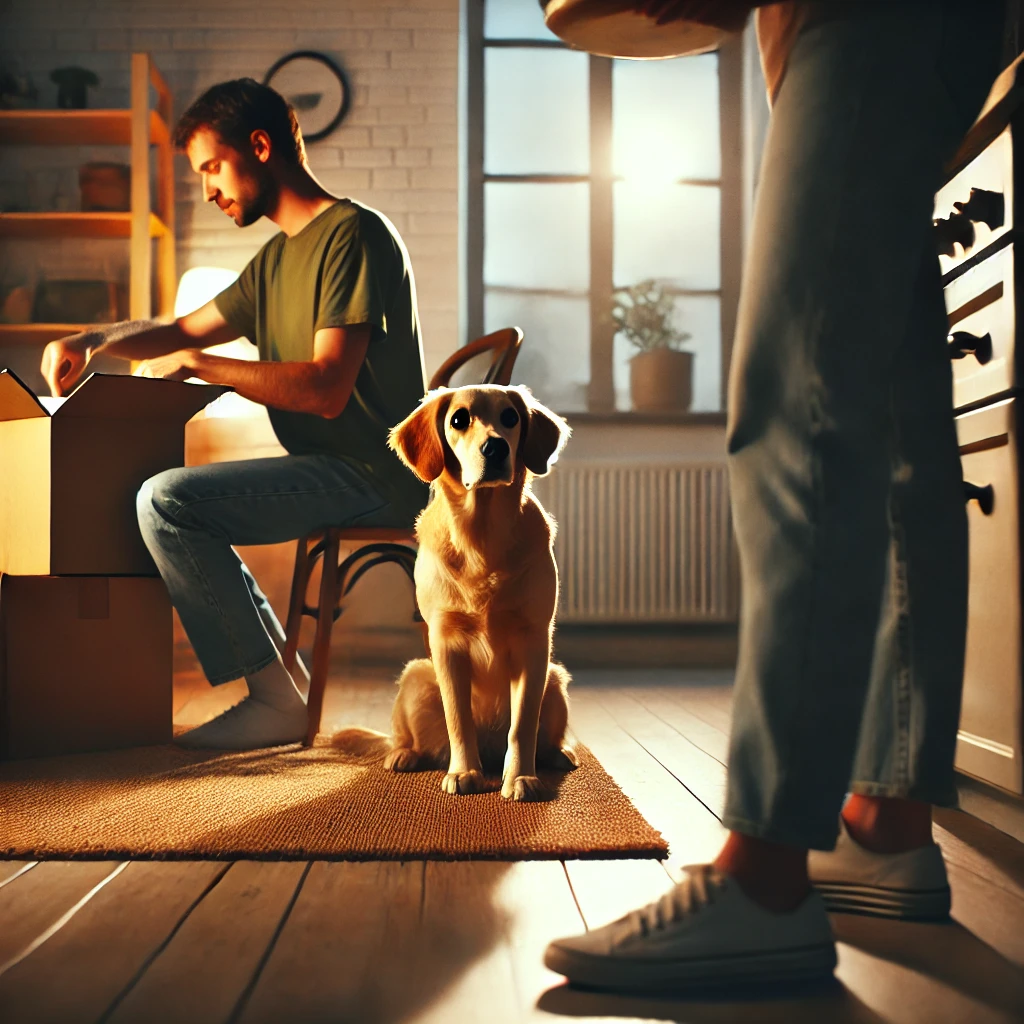
Dogs are naturally curious, and when you’re doing something unfamiliar, they may stare out of intrigue.
Whether you’re unpacking a box, exercising, or trying out a new hobby, your dog is simply observing and trying to understand what’s going on.
This behavior is a normal expression of their curiosity.
11. Can I use my dog’s staring as a training tool?
Absolutely!
Your dog’s natural focus on you can be a great advantage when training them.
When your dog stares at you, especially during training sessions, they’re showing that they’re attentive and ready for the next cue.
You can build on this attention by using it to reinforce positive behaviors with commands and rewards.
12. Why does my dog stare at me before going to the bathroom?
Some dogs may stare at their owners before going to the bathroom because they’re seeking permission or looking for reassurance.
Dogs often look to their owners for cues, and they may be waiting for you to signal that it’s okay to go.
If this happens frequently, try reinforcing bathroom cues or commands to give your dog the confidence to go without hesitation.
13. Can staring be a sign of separation anxiety?
Yes, staring can sometimes be a sign of separation anxiety, especially if your dog becomes more clingy and follows you around the house.
Dogs with separation anxiety may stare at their owners as they prepare to leave, showing signs of distress like whining or pacing.
If you suspect separation anxiety, consult your vet or a dog behaviorist for strategies to help ease your dog’s anxiety.
14. Does staring mean my dog trusts me?
Yes, when your dog stares at you in a calm, relaxed manner, it’s often a sign of trust.
Dogs are vulnerable when they make eye contact, so if your dog stares at you lovingly, it’s a signal that they feel safe and secure around you.
This is especially true if their gaze is soft and relaxed, without any signs of anxiety or stress.
15. Why does my dog stare at other people or dogs?
Your dog may stare at other people or dogs out of curiosity or as a form of social assessment.
Dogs often observe new individuals or other animals to gauge their intentions and reactions.
If the staring is followed by playful behavior or relaxed body language, it’s likely harmless curiosity.
However, if your dog becomes tense, barks, or growls, the staring could indicate discomfort or protective instincts.
Related Articles:
Why Does My Dog Lick Me So Much? The Surprising Reasons Revealed
Why Does Your Pup Give You the Dog Side Eye?
As an Amazon Associate I earn from qualifying purchases.



